8. Darkman (1990)
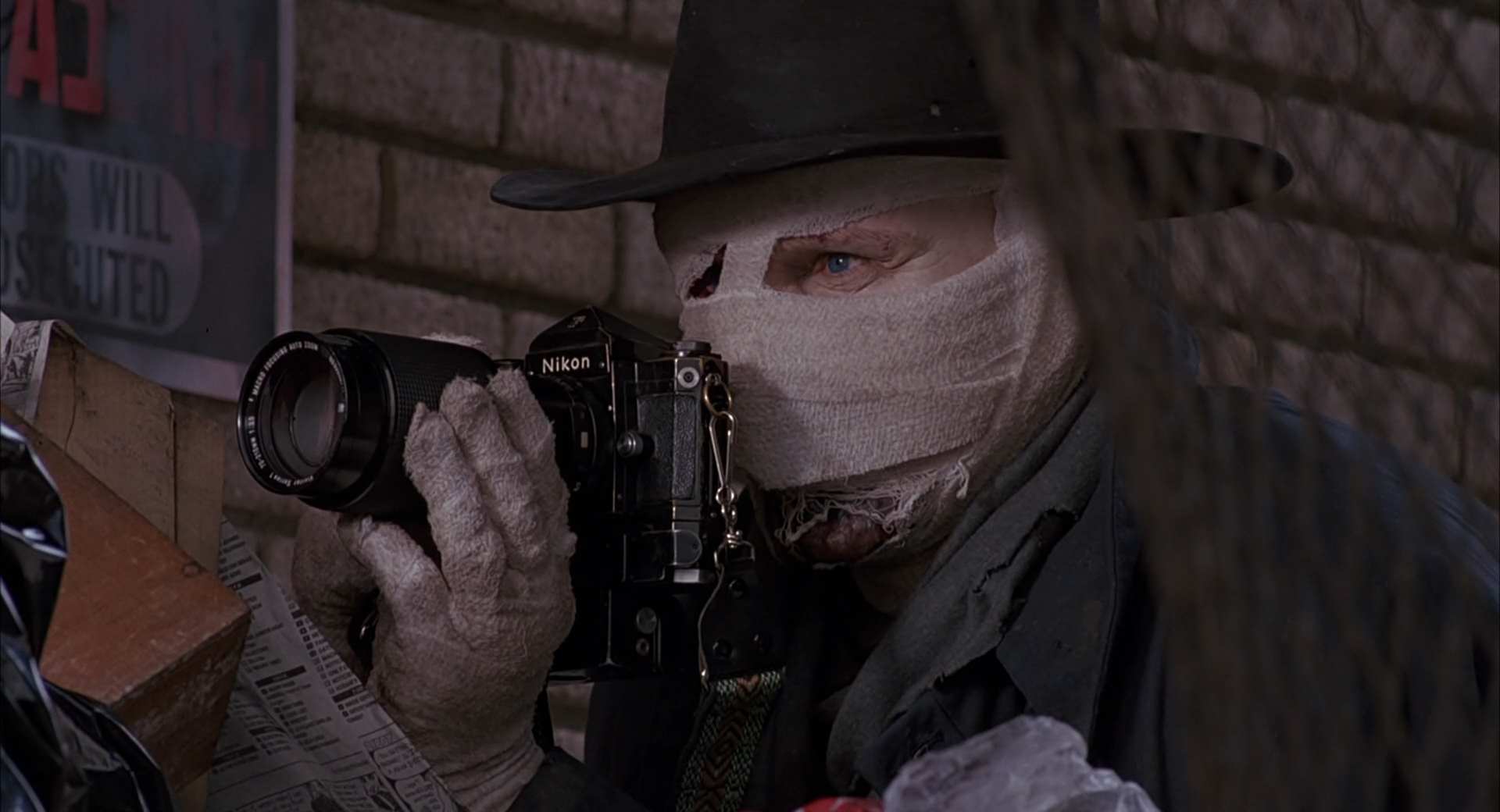
Universal has been trying desperately, for the better part of a decade now, to revitalize their classic monsters universe to increasingly more embarrassing results (look no further than the Tom Cruise-led Mummy reboot to see the depressing lows they’ve sank to) – but just imagine what great filmmaking we could be getting if the studio was banking original ideas in the spirit of those movies, but not directly based on them.
Take Raimi’s “Darkman” for example, which, though not based on any preexisting material and therefore not technically an official part of the canon of monster and comic book movies, is, nevertheless, one of the finest specimens of either genre – paying homage to it’s clear inspirations but remaining a thoroughly original creation.
The film is perhaps best remembered today as Raimi’s dry run for the Spider-Man trilogy – and indeed, many of the visual ideas he played with here would come to be used again in those movies. But that’s also selling short what a wild, unique beast “Darkman” is, unlike anything else in it’s director career; a cross between gothic horror atmosphere and comic book plotting, sprinkled with Raimi’s trademark humor (the teddy bear scene) and a surprisingly emotional doomed romance at the center. There are very few filmmakers who could juggle so many disparate tonal shifts with such ease, but Raimi makes it seem like it’s nothing.
7. Army Of Darkness (1992)
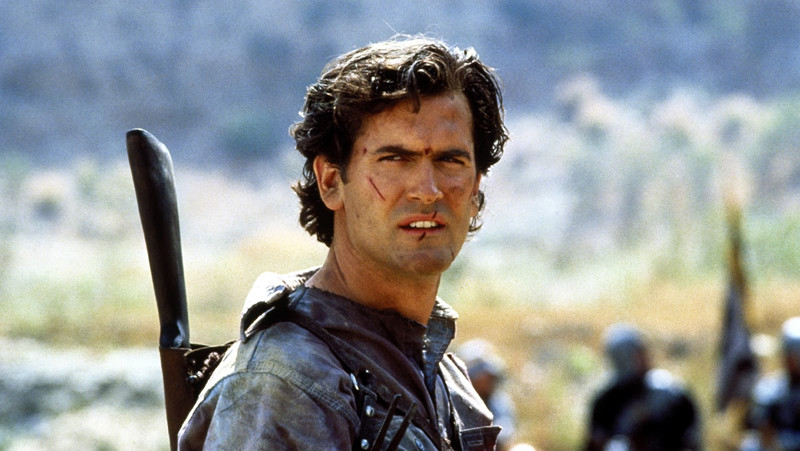
The evolution of the “Evil Dead” trilogy mirrors Raimi’s own progression as a filmmaker; the original movie is the product of a deeply talented and very hungry young artist making miracles out of a tiny budget and throwing everything at the screen in hopes of making an impression. The second one marks the maturity of a director skillfully balancing his horror roots with a burgeoning taste for slapstick comedy and, by the time the third one came about, this filmmaker had already fully become a craftsman of silliness, comfortably working within the studio system to make essentially live action, feature length Looney Tunes cartoons.
“Army Of Darkness” is the result of that magical moment in a director’s career when they have fully developed their voice and style just as they have also reached enough clout to be granted generous budgets. Free from the monetary restrictions he had to work around in the first “Evil Dead”, Raimi is able to conjure wondrous practical effects (with some of the finest stop motion action ever put to screen) and gag after frantic gag of immense inventiveness.
The boundless commitment Raimi has to the comedy plus his peerless techniques of visual storytelling (taking the camera out of the axis to employ crash zooms, dollies and pans unlike any other) continue to make “Army Of Darkness” a thoroughly joyful experience.
6. Spider-Man (2002)
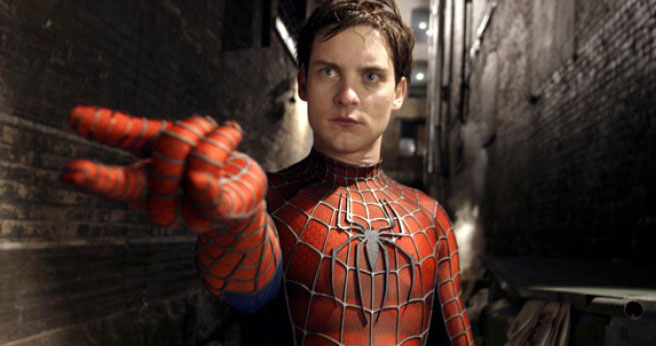
The original “Spider Man” movie has been such a monumental presence in culture and in our collective consciousness for so long now that it’s easy to sort of take it for granted.
In some ways, it’s as influential (for better or worse) a film as “Jaws” was, in that it fundamentally shifted the path of popular entertainment into a whole new direction – of course, this wasn’t the first successful superhero movie. Just a few years before we had “X-Men” and even “Blade”, but out of those, it seems clear which one was the blueprint upon which the comic book movie mania we’re still going through was built, structurally (the origin story journey presented here is essentially the same to this day) and tonally (bright and fun, as opposed to the doom and gloom of the Fox superhero variety).
And yet, how many of the litany of superhero movies that followed in its wake can claim to have Spider Man’s staying power (including the reboots of the very same character)? How many of them have a single image as iconic as the upside down kiss, as brilliant a villainous performance as Willem Dafoe’s Green Goblin or a more perfect page to screen character interpretation as J. Jonah Jameson?
The key to this film’s longevity and continued quality, of course, is having a real director behind it, instead of a studio stooge. Raimi’s passion for the character and story is visible every second of this lovingly made piece, which makes all the difference.
5. A Simple Plan (1998)
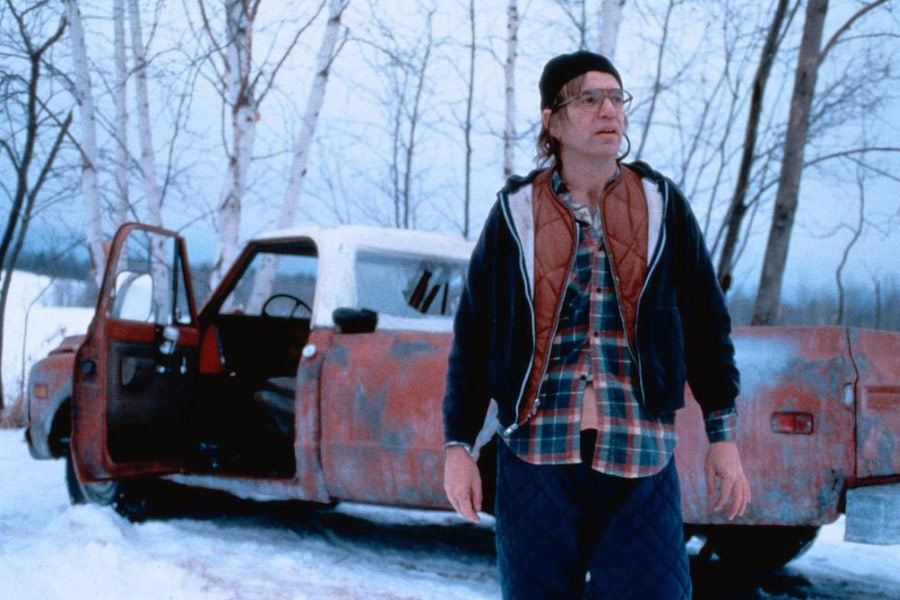
Whenever a director steps out of their comfort zone, meaning, work outside of their usual genres and/or established style, the results tend to be either disastrous or brilliant – you could end up with a Francis Ford Coppola “Jack” or a David Lynch “The Straight Story”.
Raimi experienced both extremes: “For Love Of The Game” is so devoid of any kind of personality as to be a completely anonymous work; whereas “A Simple Plan”, made just one year before, is a masterful exercise in restraint from one of American cinema’s greatest maximalists.
On an initial look, “A Simple Plan” is aesthetically, tonally and even in terms of narrative a complete departure from Raimi’s style; a grounded crime tale that uses it’s thriller trappings as a backdrop to what boils down essentially to a family drama, a tragic story of people losing their humanity and destroying themselves and others for pure greed. It’s in this way that Raimi proves himself thoroughly qualified for this material. Even in his most outlandish movies, he has always been a filmmaker of great humanity and emotional intelligence, grounding the stories in a core of psychological reality – just think of the romances at the heart of “Darkman” and “Spider Man”, and how the fun comic book silliness of those pictures is granted tremendous soul thanks to Raimi’s commitment to nuanced character work.
Just as impressive is that, even when restraining himself from his trademark maniacal camera moves, Raimi has a great eye. The compositions and the use of snow as an atmospheric backdrop is all terrific, equally as brilliant as the Coen’s (and Roger Deakin’s) celebrated work on “Fargo” – but for some unfathomable reason, much less recognized.
4. Drag Me To Hell (2009)
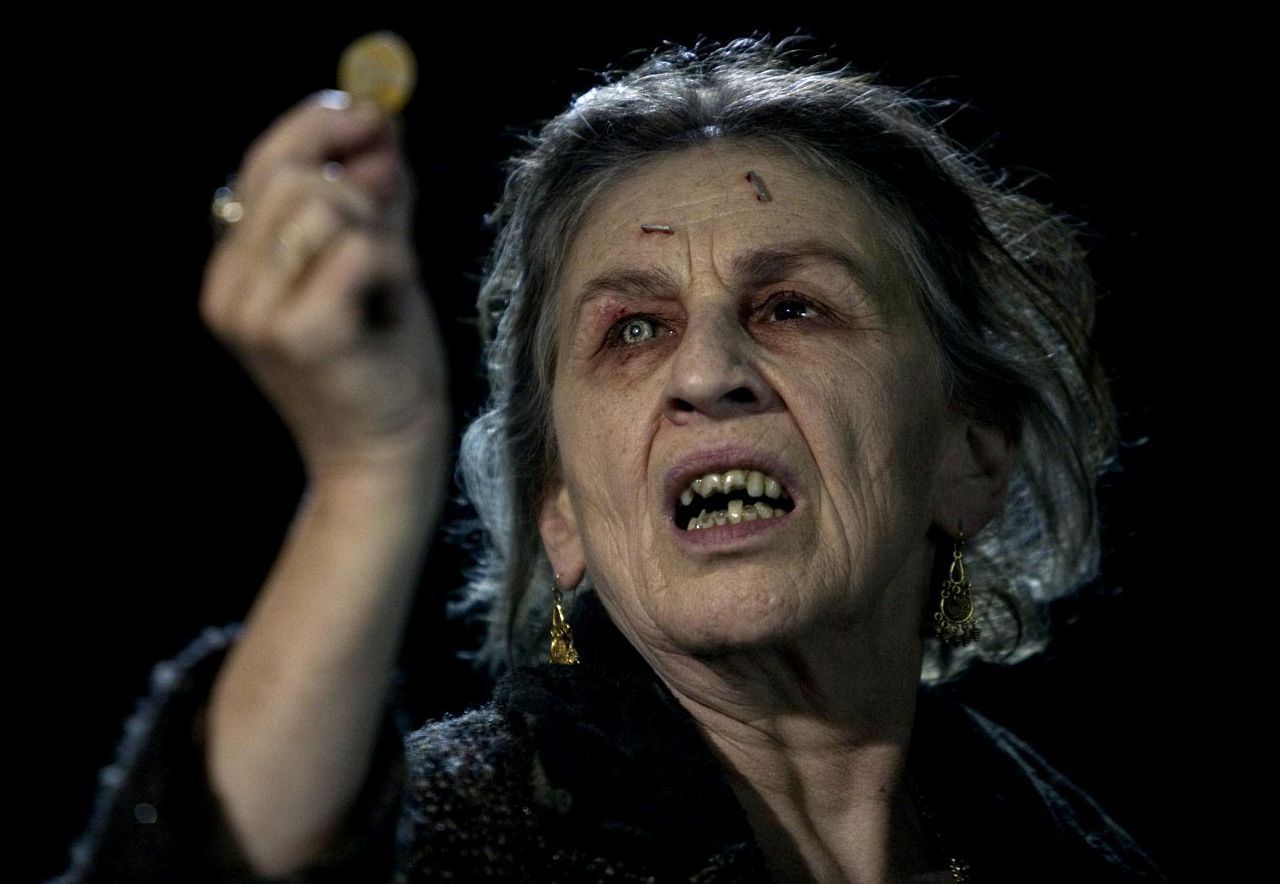
Despite Raimi’s reputation as a schlock-meister and one of the greatest horror-comedy directors in the world, he actually made relatively few films of this kind – his career is fairly varied, ranging from westerns to crime comedies and, of course, superhero flicks.
In fact, outside of the “Evil Dead” trilogy, the only time Raimi ever made a real horror-comedy was with “Drag Me To Hell”, a movie so gloriously enjoyable that it’s enough to make us lament he didn’t keep making these kinds of films forever. In fact, there’s an argument to be made that Raimi never got the balance of scares and laughs so sublimely as he did here – the original “Evil Dead” is a straight horror picture; it’s sequel veers into self-parody almost immediately, favoring gags over frights and “Army Of Darkness” is just a comedy-adventure with very sparse horror elements peppered throughout.
“Drag Me To Hell”, on the other hand, is as genuinely terrifying as it is belly-aching hilarious; the most uncharacteristically mean-spirited thing Raimi ever directed, who takes great glee in torturing his lead character in ever-more elaborate and fantastic ways; sharpening her misery into incredible set pieces, gross and nonsensical in equal measure. A masterpiece of horrifying slapstick.
3. Evil Dead II (1987)
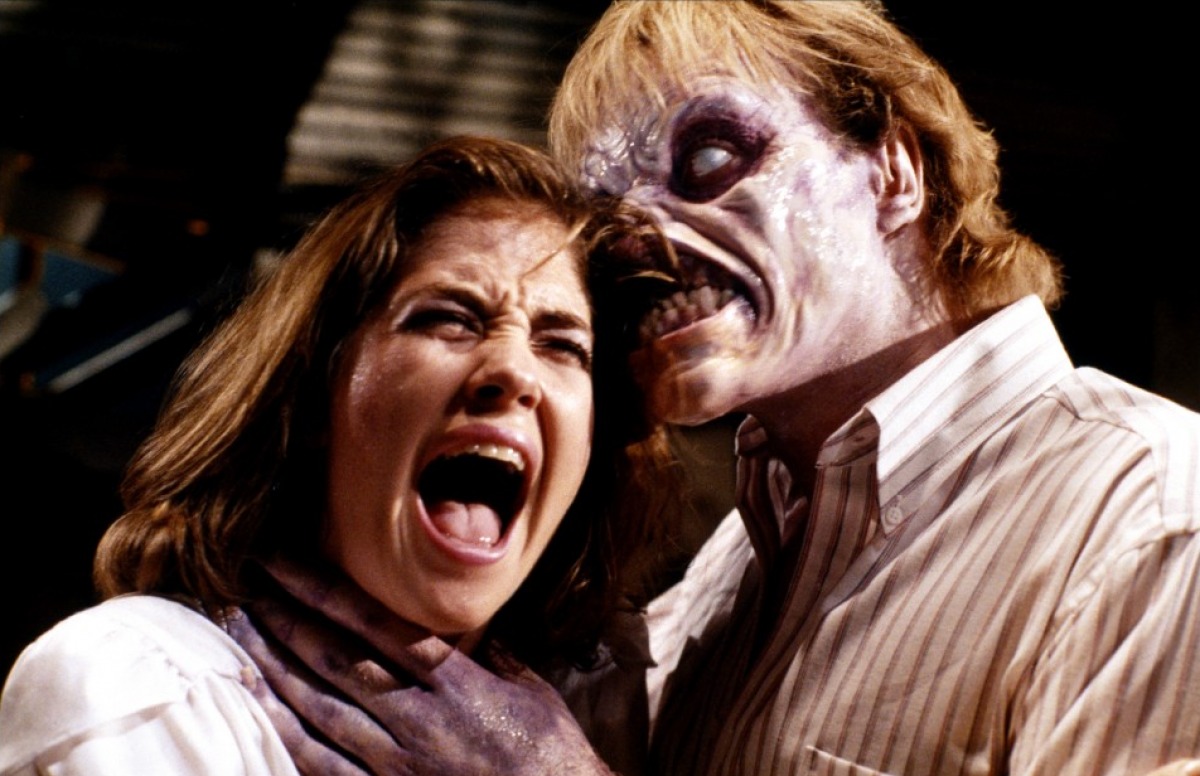
Following the catastrophe of “Crimewave”, which nearly derailed his entire career before it had properly began, Raimi was left with very little wiggle room for what to do next; he essentially had no other choice but return to his initial breakthrough movie: “Evil Dead”.
Wary of repeating himself, the director sought to make a completely different film, one set in the middle ages and involving a time travel plot – an idea summarily rejected by producers, who would agree to finance the project (with a much more generous budget this time) only if it resembled it’s predecessor.
These restrictions, usually the kiss of death for any creative trying to accomplish something fresh, were actually the best thing that could’ve happened; forced to adhere to the same basic story and structure again, Raimi had to find other ways to exercise his boundless imagination, making “Evil Dead II” simultaneously a sequel, a stealth remake and a parody of the first one, a tremendously giddy expansion and subversion of what came before.
“Evil Dead II” is one of the most radical sequels ever made (not to mention one of the best); taking what was a hard, horrifying horror movie and transforming it into a live action Tex Avery homage, whilst still maintaining the spirit of the original intact; especially with regards to the manic visual language. Raimi, of course, would eventually get his original wish in the form of “Army Of Darkness”, but he still couldn’t beat this one.
2. Spider-Man 2 (2004)
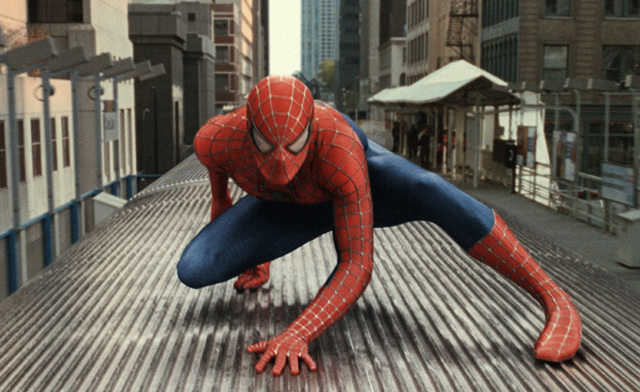
Good sequels are difficult to make; sequels which are superior to their predecessors are an Herculean, almost impossible feat to accomplish – the list of second films that can definitively be considered not only good by themselves but also an improvement upon the original is a slim, rarefied one.
Leave it to Raimi then, who, among many other things, is a master at following up his own franchises (as we’ve seen with both of his excellent “Evil Dead” continuations), to create one of the finest sequels ever made with the superhero masterpiece that is “Spider-Man 2”. Building on the foundation of the first movie, Raimi deepens and improves upon all the essential elements that made the original great, from the phenomenal set pieces (the staggering, iconic train-stopping sequence remains one of the great blockbuster moments of the last 20 years) to the tragic, nuanced villain in the form of Alfred Molina’s Dock Ock.
That being said, the most crucial component of the brilliance of this trilogy, and this film in particular, what puts it leagues ahead from the countless other factory-produced comic book movies that dominate the market today, is Raimi’s humanity and his treatment of the characters. Nowadays every single character in these movies is portrayed as either a quip-delivering machine or a soulless muscle-bound vessel of pure-goodness; but this Peter Parker, this Mary Jane, this Aunt May are real people facing compelling human conflicts.
For all the acrobatic visual playfulness he peppers through the film that makes it even more fun (the hospital scene being one of his all-time best horror sequences), perhaps Raimi’s most genius move was hiring screenwriter Alvin Sargeant (a veteran of small-scale, emotionally complex character studies like “Ordinary People”) to pen this sequel. “Spider Man 2” is the platonic ideal of what a super-hero movie should be: big in scope, viscerally exciting and emotionally involving on a deep level.
1. The Evil Dead (1981)
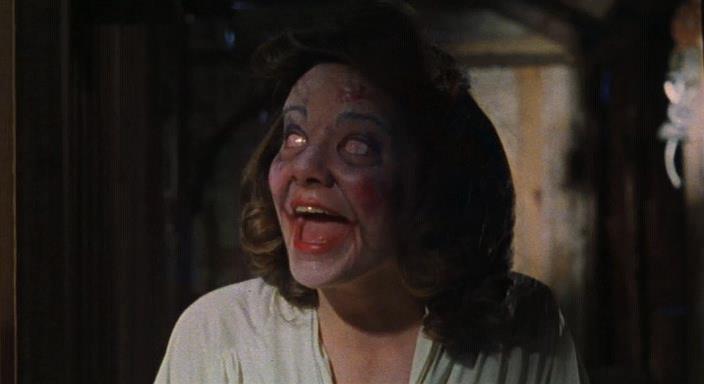
Whenever one seeks to rank any director’s filmography, there’s a question that should be the guiding principle: what are this filmmaker’s primary characteristics as an auteur and which movie best defines them? Even if that one individual film isn’t necessarily the most universally beloved or celebrated, it must be, by definition, their most important work, that one that best symbolizes a career.
In Raimi’s case, choosing the first “Evil Dead” as that film may simultaneously seem obvious and incongruous. Obvious because it’s probably the one picture most associated with his name but incongruous because in many ways his style developed so far beyond what he did in his debut – most noticeably his characteristic Saturday morning cartoon sensibility of visual comedy is almost nowhere to be found here.
And yet, all these years later, “The Evil Dead” remains the most impressive monument to Raimi’s maverick abilities as a craftsman and storyteller; what he and his team manage to do on a risibly tiny budget is staggering, pushing the boundaries of visual language beyond what anybody else was doing at the time (removing the camera out of any kind of axis and moving it in wild ways to represent the supernatural forces at hand) and creating an entire new mode of horror filmmaking in the process.